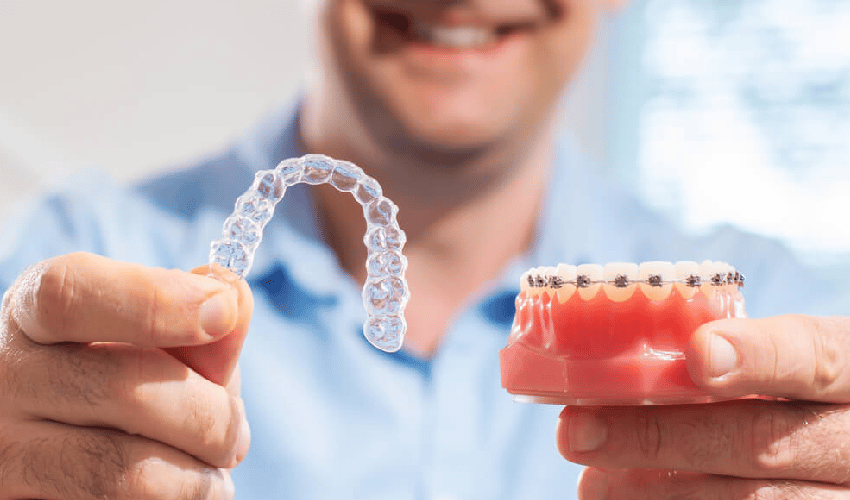Orthodontics is an advanced branch of dentistry, that mainly deals in diagnosing, preventing, and correcting misaligned teeth and jaws. This field has evolved significantly over the years, offering various treatments to cater to different dental issues and patient preferences. If you are considering orthodontic treatment, understanding the available options is important. In this article, we will take a look at some of the different types of orthodontic treatments available.

Traditional Metal Braces
Traditional metal braces are one of the most common and popular orthodontic treatments. They are made up of rubber bands and wires connecting metal brackets that are glued to the teeth. Regular adjustments by an orthodontist help gradually move the teeth into the desired position.
Severe misalignments and complex dental issues can be effectively treated with metal braces. They are strong and less likely to break because they are made from high-quality stainless steel. Also, they are more affordable when compared to other orthodontic treatments.
Ceramic Braces
Ceramic braces are similar to traditional metal braces, but they use clear or tooth-colored brackets, making them less noticeable. They are perfect for those who seek a more aesthetically pleasing alternative to metal braces.
They offer the same effectiveness as metal braces for more orthodontic issues. They are less visible than traditional metal braces, making them a popular choice for adults and teenagers.
Lingual Braces
Lingual braces are similar to traditional braces but they are placed on the inside surface of the teeth, making them more invisible from the outside. To ensure a proper fit, they are custom-made for each patient.
The main benefit of lingual braces is that they are completely hidden from the view. Comfort and effectiveness are guaranteed by the customized design of each bracket.
Clear Aligners (Invisalign)
Clear aligners such as Invisalign are one of the most popular alternatives to traditional braces. Patients wear a new set of aligners every one to two weeks, which consists of clear plastic trays that are custom-made and gradually bring the teeth into alignment.
Clear aligners are virtually invisible, making them an excellent choice for those uncomfortable about their appearance. They are less likely to irritate skin than braces and are more comfortable due to their smooth plastic construction. They can be removed for eating, brushing, and flossing, promoting better oral hygiene.
Self-Ligating Braces
Self-ligating braces hold the wire in place without the need for elastic bands by using a specifically designed clip mechanism. This system allows the wire to move more freely, significantly reducing the treatment time and the number of adjustments needed.
Conclusion
Selecting the appropriate orthodontic treatment depends on several factors including the seriousness of the dental issue, patient preferences, lifestyle, and budget. Consulting with an orthodontiste à Uccle (orthodontist in Uccle) can provide personalized recommendations and ensure the best outcome for your specific needs.






